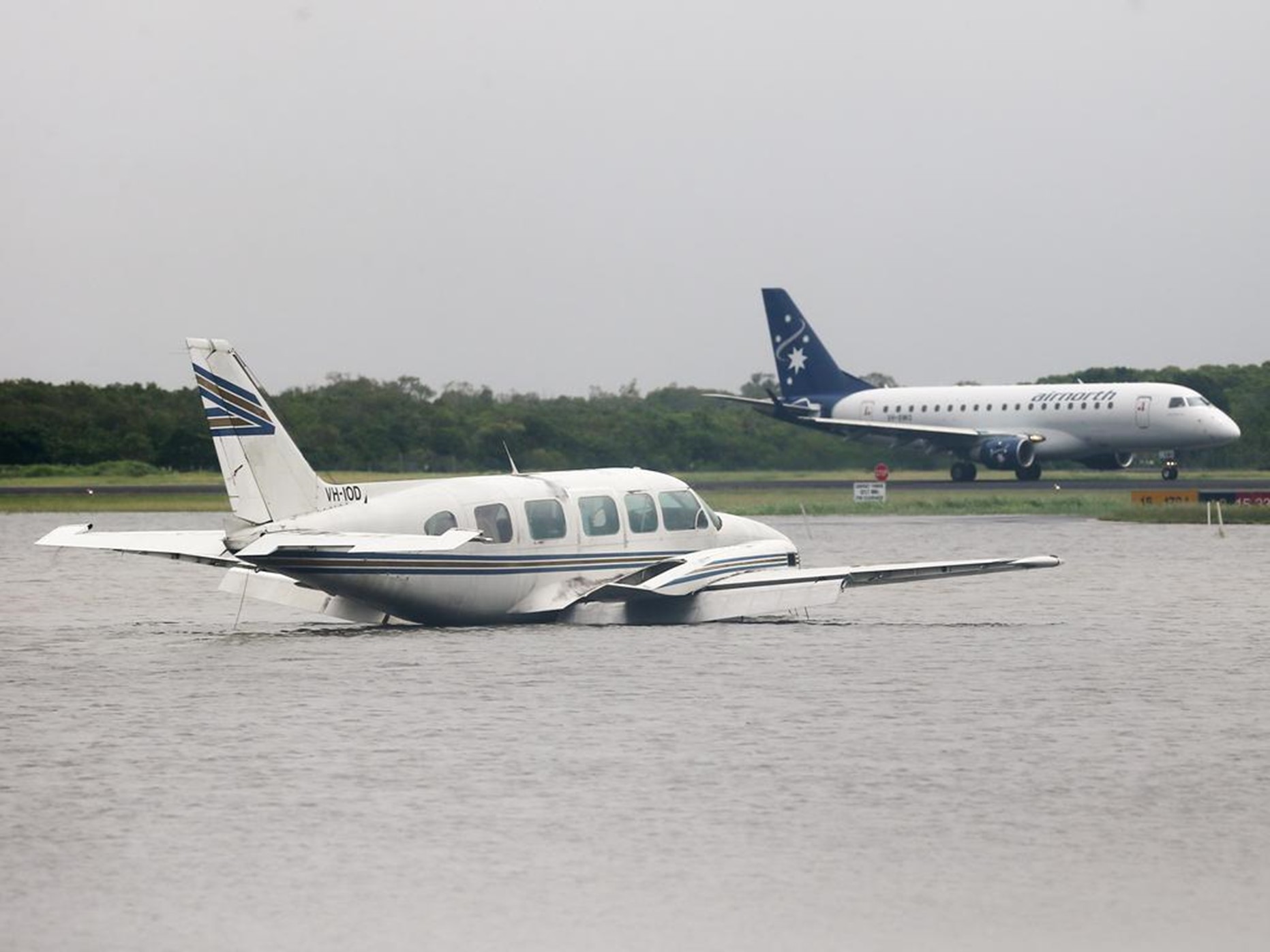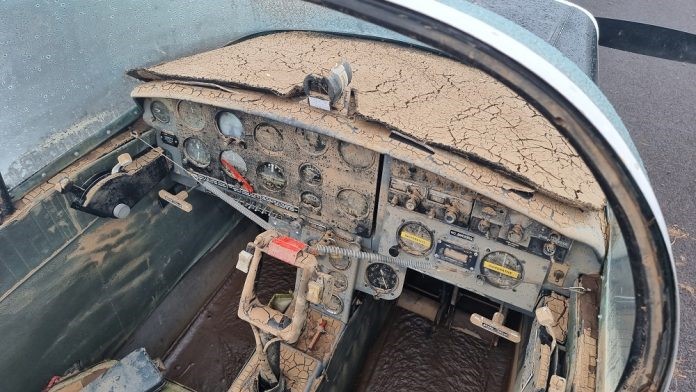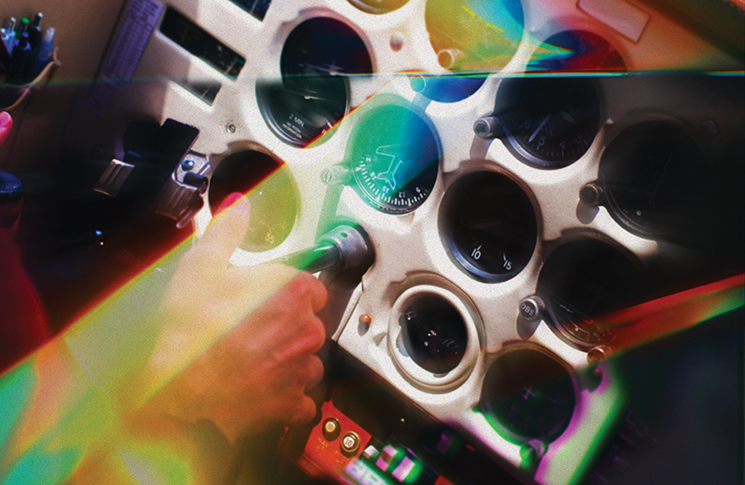It wasn’t just houses and businesses that fell foul of the recent flooding and torrential rain that inundated the towns of Lismore and Cairns in recent times – aircraft also were affected.
The question is whether to write off an aeroplane affected by water immersion or make repairs. The answer to this will depend on many factors, after each aircraft is assessed individually on a case-by-case basis. Unlike cars, there is no statute preventing an aeroplane that has been written off by an insurance company from being repaired.
Owners can take the payout, buy back the damaged aircraft, get it repaired, and have its airworthiness restored. Some manufacturers may issue a service bulletin stating that they will no longer offer it support because it is known to be seriously flood damaged or has been submerged.
However, Flight Safety Australia was told most manufacturers don’t do this and, in many cases, there is no legal requirement to stop a flood-damaged aeroplane being returned to service.
After the recent flood events in NSW and Queensland, it’s not clear how many aircraft fall into this category.
Returning an aircraft that has been flood damaged to service and doing it properly to an airworthy state is a difficult and time-consuming task. It is neither easy nor cheap.
Gustav Anderson, manager of continued operational safety at CASA, says owners should not attempt to simply hose out an aircraft and start it up again.
‘It is necessary to remove anything that could possibly corrode an aircraft as quickly as possible. One manufacturer puts this time limit at 5 days – in addition to the replacement of many components’, says Anderson.
‘Some aircraft will require a total rebuild, looking at a year or so,’ he said, noting aircraft damaged in the most recent floods would likely be rebirthed, repaired, or parted out.
 Flooding in far north Queensland. Image: Cairns Post.
Flooding in far north Queensland. Image: Cairns Post.
CASA has previously issued airworthiness bulletins (AWBs) outlining the steps that should be taken to return aircraft to service where manufacturer guidance is not available.
AWB 02-066 Issue 1 deals with issues for the whole aircraft – airframes, avionics, propellers, electric motors, and systems such as hydraulics, flight controls and fuel. The other bulletin, AWB 85-027 Issue 1, deals with aircraft engine(s).
Important factors include the level of the flood water, how long an aircraft was subject to the flooding, whether it was fresh water or salt water, whether the water was contaminated by chemicals and pollutants and how long it takes before the cleaning and repairs can begin.
Both bulletins note the longer it takes to extricate the aircraft and assess the damage, the greater the likelihood the water and its contaminants will migrate into components and assemblies. There is a need to move quickly to clean the aircraft, perform interior and exterior inspections, remove corrosion and apply protective treatments and finishes.
‘A significant number of component/parts may need to be replaced as water serves as an electrolyte that promotes corrosion,’ AWB 02-066 says.
‘The corrosiveness of water depends on the dissolved minerals, organic impurities and dissolved gasses, particularly oxygen, in the water.’
And fresh water may not be as fresh as you think. Experts say it varies significantly between localities and depends on factors such as the dissolved impurities, minerals and the presence of chlorine and fluorides.
If an aircraft has been inundated by salt water, this adds further complexity, as the salinity in the water will corrode the compounds of most components, jeopardising the aircraft’s structural integrity.
AWB 02-066 emphasises inspections should be performed in the first instance, according to the manufacturer’s data and recommendations, or what is referenced in the operator’s maintenance program.
These take precedence over recommendations in the bulletin, which would only be applicable to aircraft where the manufacturer has not published the relevant information for flood damage inspections.
Where there is no manufacturer information to cover for flood inspections, AWB 02-066 recommends a list of actions related to the airframe and its various components and systems.
This includes removing interior components to expose and inspect the aircraft structure and, where necessary, removing flight controls such as rudder, elevators, ailerons, and even horizontal and vertical stabilisers. In some situations, there would be a need to remove wings.
Many subcomponents such as mechanical actuators, bell-cranks and pushrods may also need to come out to be cleaned, inspected and re-lubricated or replaced.
All affected internal and external areas of the aircraft should be adequately cleaned using approved water-detergent solution or water-emulsion cleaning compound MIL-C-43616.
All contaminated areas should be thoroughly washed with potable water and a corrosion inhibitor applied where necessary.
Components likely to need replacing include bearings, wiring bundles and electrical components, while flight control systems should be cleaned and lubricated. Hydraulic and fuel systems need to be flushed.
AWB 85-027 warns that moisture or foreign materials will cause damage to all systems of an engine immersed in water and this can remain hidden to inspections as it develops over time.
As with all aircraft maintenance the advice is always to follow manufacturers’ recommendations where possible.
In most cases the engine will need to be disassembled to enable proper visual inspection of all internal parts for contamination and condition by an approved organisation.
All areas of the engine and associated components will need to be cleaned using approved methods, especially areas where debris and silt can get trapped, and then a thorough inspection carried out before it is reassembled.
CASA produces directives and rules for aircraft maintenance and repair activities, as well as bulletins and guides for airworthiness safety advice. These can be accessed on the CASA website.





